YOU ARE LEARNING:
Voltage Output Over Time
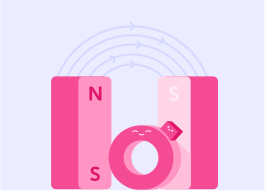
Voltage Output Over Time
The voltage produced by an alternator changes from positive to negative due to the AC, but a dynamo always produces a positive voltage due to the DC.
This is a rotating generator, and more specifically an alternator. Every time the coil half turns, the direction of the current _____________.

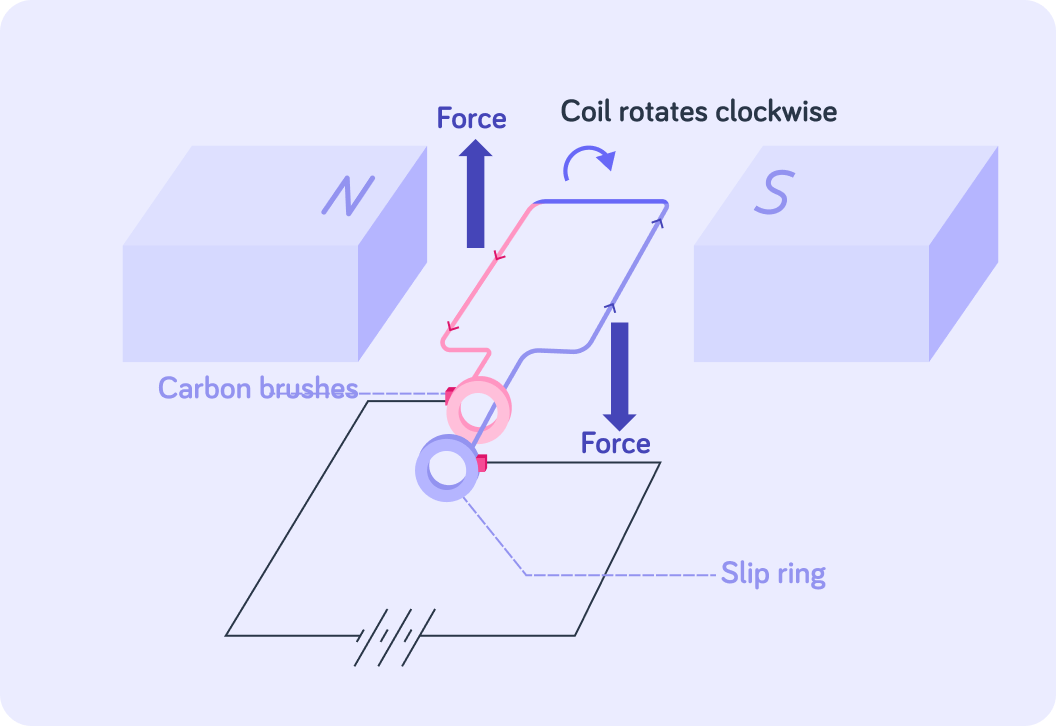
Notice the slip rings and their positions.
The pink side of the coil will always be connected to the pink ring (which is closer to the magnets), and the purple side of the coil will always be connect to the purple ring (which is further away).

Notice also the carbon brushes. Are the brushes stuck to the slip rings? Answer yes or no.


The carbon brushes only touch the slip rings, allowing the current to flow.
They are not stuck to the slip rings. If they were, the slip rings and the coil wouldn't be able to turn.

What type of current does this rotating coil generator create?


This is the potential difference over time for an alternating current produced by an alternator.
This diagram shows one 360º rotation of the coil.
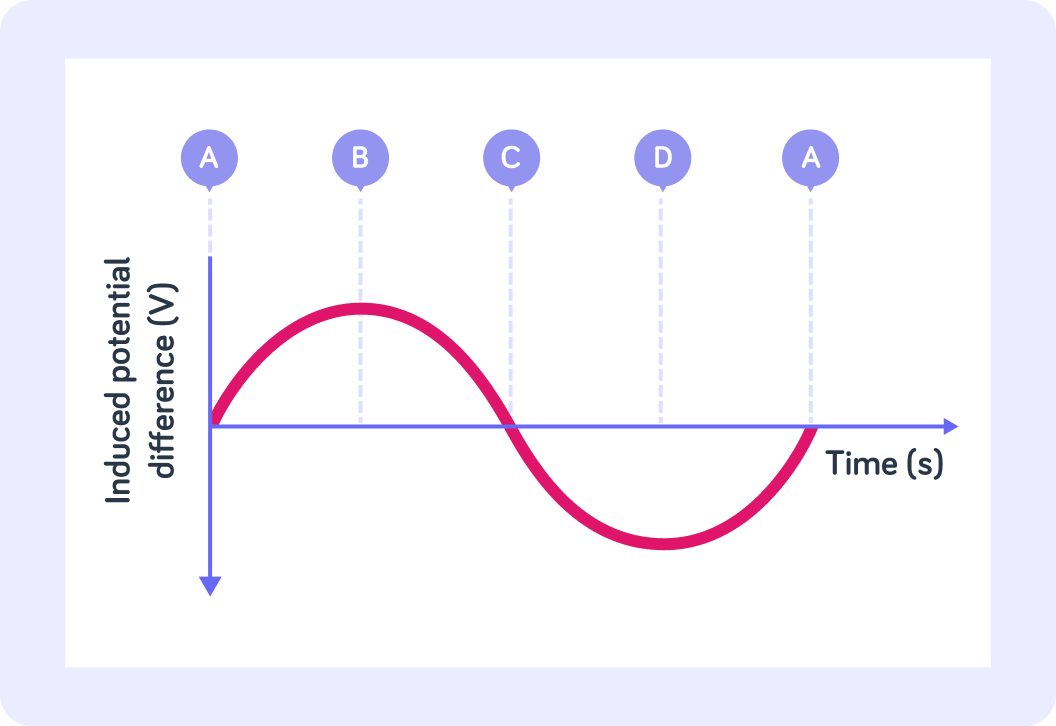
What is the coil doing at point A?
a) Moving parallel to the direction of the magnetic field. b) Moving at 90º to the direction of the magnetic field. c) Moving at 180º to the direction of the magnetic field.
Answer a, b or c.


What is the coil doing at point B?
a) Moving parallel to the direction of the magnetic field. b) Moving at 90º to the direction of the magnetic field. c) Moving at 180º to the direction of the magnetic field.
Answer a, b or c.


At point C, the potential difference is back to zero.
This is because the coil has made a half-turn or turned 180º from its original position, so it is back to moving parallel to the direction of the magnetic field.

At point D, the coil is moving at _________ degrees to the direction of the magnetic field.


At point D, the coil has rotated 3/4 of the way through a circle, which is the same as 270º to the direction of the magnetic field.
This is why it now shows as a negative induced potential difference - the current will now be moving in the other direction.

At the final point (point A again), the coil has rotated 360º. What is the induced potential difference at this point?


So the induced current is changing direction all the time.
The induced voltage changes between positive and negative.

However, we don't always want an alternating current.
Sometimes we want a direct current. To generate this we need a split-ring commutator. Notice we are now not talking about "slip rings" anymore. We are talking about "split rings".
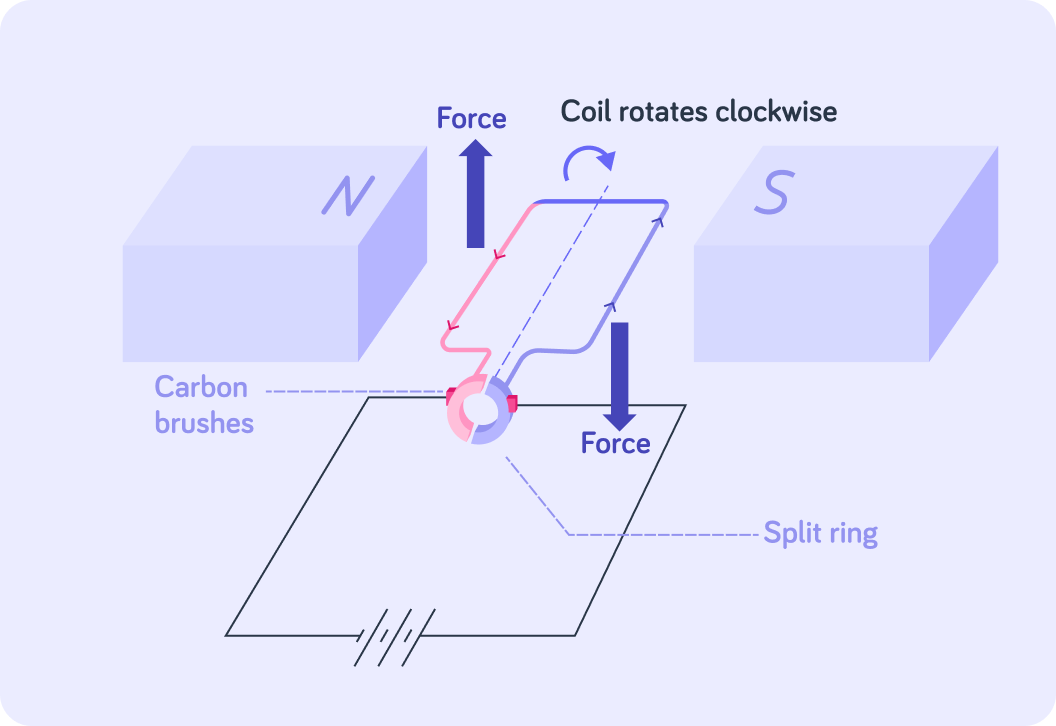
Here we can see a split-ring commutator. How many parts does it consist of?


Each half is connected to one side of the circuit.
Just like for slip rings, the brushes are not stuck to the split ring. This is because the split ring also has to be able to rotate.

Each half of the split ring is connected to...
A) both sides of the coil. B) only one side of the coil.
Answer A or B.


The split-ring commutator makes sure that the current can continue to flow in the same direction.
When the split ring rotates it counteracts the change in current direction which happens in a setup that uses only slip rings.

Whereas the induced voltage in an alternating current shifts between positive and negative, voltage in a direct current is always _____________.

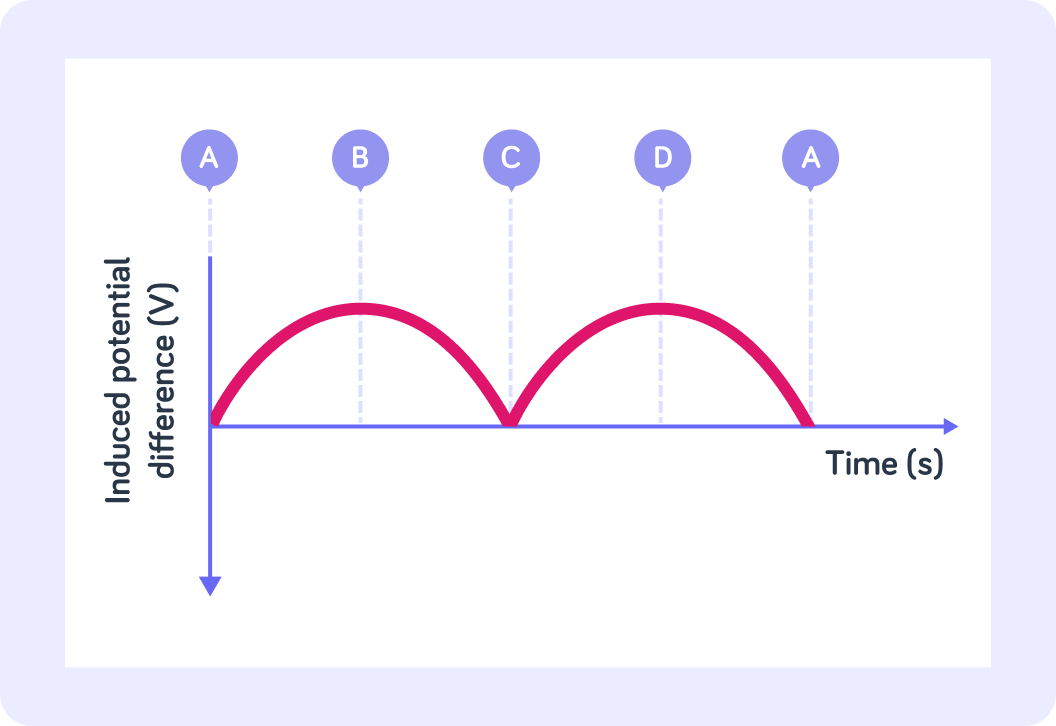
To sum up!
We can generate an alternating current...
with a rotating generator using slip rings, otherwise known as an alternator.
We can generate a direct current...
with a rotating generator using a split-ring commutator otherwise known as a dynamo.
